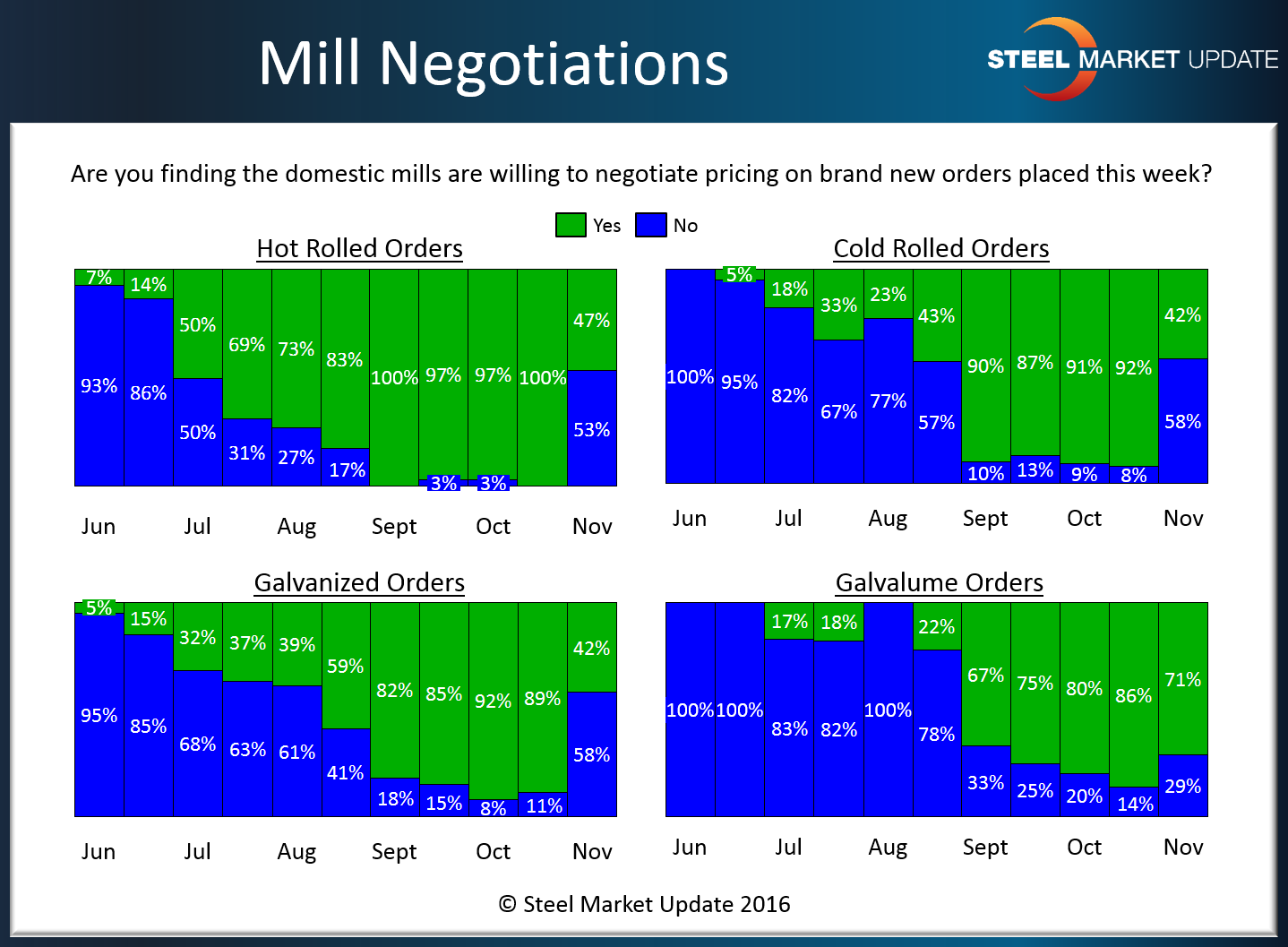SMU Data and Models

Steel Mill Negotiations: Mills React to Price Increases
Written by John Packard
November 10, 2016
One of the areas of our focus during our twice monthly flat rolled steel trends survey is how flexible are the domestic steel mills when negotiating spot steel prices with their customers? Over the past three months the mills have been willing to discuss discounts in order to obtain business. We found this on all products: hot rolled, cold rolled, galvanized and Galvalume with hot rolled being the weakest of the four.
With the two price increase announcements having been made since our last analysis, we have found a significant change in the negotiating positions being taken by the domestic steel mills.
Hot rolled coil had 97-100 percent of our survey respondents reporting the mills as negotiating on pricing during the months of September and October. Now in early November we have seen those reporting that way dropping to 47 percent.
Cold rolled coil was not quite as dire as hot rolled but still 87-92 percent of our respondents reported the mills as willing to negotiate CRC spot pricing during the months of September and October. That number dropped by more than half as only 42 percent are reporting CRC pricing as negotiable.
The galvanized story is similar to that of cold rolled with 82-92 percent reporting the mills as negotiable during the month of September and October. That number is now 42 percent.
Galvalume is the one product where prices continue to be negotiable according to those taking our survey this week. Seventy one percent of those responding to our AZ questions report the product as negotiable at the domestic mills.
A side note: The data for both lead times and negotiations comes from only service center and manufacturer respondents. We do not include commentary from the steel mills, trading companies, or toll processors in this particular group of questions.
To see an interactive history of our Steel Mill Negotiations data, visit our website here.

John Packard
Read more from John PackardLatest in SMU Data and Models

SMU Survey: Sheet lead times ease further, plate hits one-year high
Steel buyers responding to this week’s SMU market survey report a continued softening in sheet lead times. Meanwhile, plate lead times have moderately extended and are at a one-year high.

SMU Survey: Buyers report more price flexibility from mills
Nearly half of the steel buyers responding to this week’s SMU market survey say domestic mills are showing increased willingness to negotiate pricing on new spot orders. This marks a significant shift from the firmer stance mills held in prior weeks.

SMU Survey: Buyers’ Sentiment Indices fall
Current Sentiment Index dropped six points to +42 this week compared to two weeks earlier. It has fallen in every successive survey since reaching a 2025 high of +66 on Feb. 19.

March service center shipments and inventories report
Steel service center shipments and inventories report through March 2024.

Apparent steel supply contracts in February
The amount of finished steel that entered the US market in February receded from January’s peak, according to our analysis of Department of Commerce and American Iron and Steel Institute (AISI) data.

